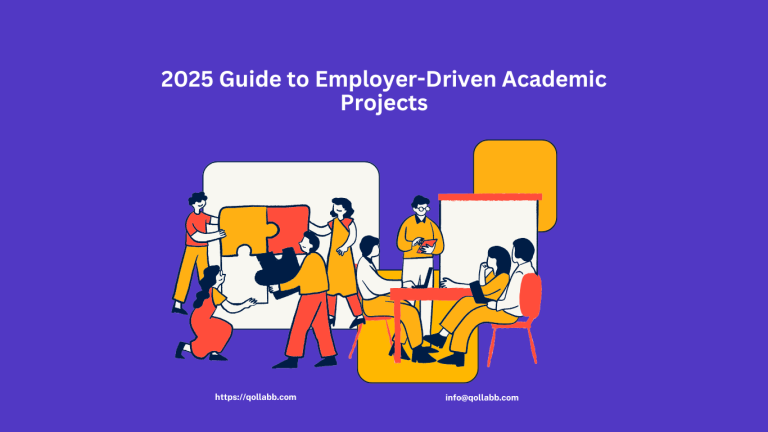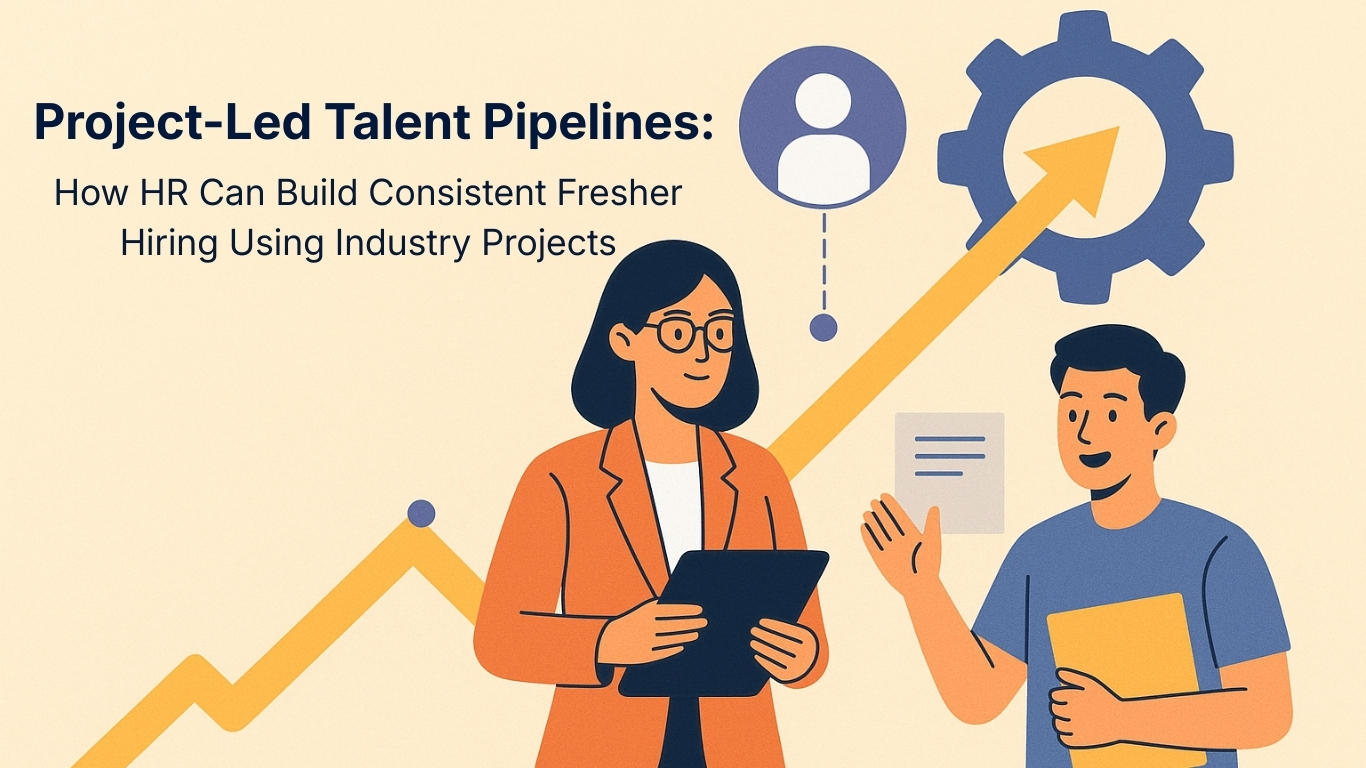The concept of employer-driven academic projects is transforming how students prepare for the professional world. Universities face increasing pressure to produce graduates who are not only academically sound but also industry-ready. Employers demand job-ready talent with demonstrable skills, while students seek practical exposure to bridge the gap between theoretical knowledge and real-world challenges. By incorporating employer-driven academic projects into curricula, institutions can enhance employability, strengthen industry ties, and meet educational mandates. This guide explores the significance of employer-driven academic projects and their transformative impact on higher education.
The Importance of Employer-Driven Academic Projects
1. Real-World Relevance
One of the key advantages of employer-driven academic projects is their ability to connect academic learning with real-world applications. These projects allow students to engage with actual industry challenges, whether by solving operational problems, analyzing market trends, or designing prototypes. Such experiences enable students to bridge the gap between theoretical knowledge and practical problem-solving, making their education more impactful and career-ready.
2. Enhanced Learning Outcomes
Participation in employer-driven projects enhances learning outcomes beyond traditional classroom settings. Students acquire essential skills such as critical thinking, adaptability, and collaboration. They also refine their communication and teamwork abilities—skills highly valued by employers. By working on real-world tasks, students gain confidence, improve their resumes, and position themselves as competitive candidates in the job market.
3. Industry Collaboration
For institutions, these projects offer a unique opportunity to establish and strengthen relationships with industry partners. Employers benefit by identifying top talent while contributing to academic development. Institutions, in turn, enhance their reputation as leaders in innovative and industry-aligned education. This symbiotic relationship fosters a dynamic ecosystem where all stakeholders thrive.
How Qollabb Facilitates Employer-Driven Academic Projects
Qollabb simplifies the integration of employer-driven academic projects into university curricula, ensuring a seamless experience for institutions, students, and employers. Here’s how:
1. Connecting Stakeholders
Qollabb serves as a bridge between academia and industry. Its platform connects universities, students, and employers, enabling them to collaborate effectively. Institutions can use the platform to provide students with hands-on learning opportunities, while employers design projects reflecting real business needs.
2. Customizable Project Integration
One of Qollabb’s standout features is its flexibility. Institutions can tailor projects to align with specific academic goals and regulatory mandates. Whether incorporated into final-year capstone projects or offered as extracurricular initiatives, Qollabb ensures relevance and scalability.
3. AI-Powered Project Matching
Using advanced algorithms, Qollabb matches students with projects that suit their skills, interests, and career aspirations. This personalized approach enhances engagement and ensures meaningful learning experiences.
4. Performance-Based Evaluation
The platform’s performance analytics allow institutions and employers to track student progress in real-time. These data-driven insights not only highlight individual achievements but also help employers make informed hiring decisions.
Implementation Guide for Institutions
Integrating employer-driven academic projects requires a strategic approach. Here’s a step-by-step guide:
Step 1: Needs Assessment
Begin by collaborating with academic leadership to identify program objectives, target disciplines, and student groups. Define the desired outcomes of the projects to ensure alignment with institutional goals.
Step 2: Project Setup
Partner with employers to design projects that reflect real-world challenges. Clearly outline project scopes, timelines, and deliverables to ensure all stakeholders are aligned.
Step 3: Student Onboarding
Provide students with training sessions to familiarize them with the platform. Guide them in selecting projects based on their interests and career aspirations.
Step 4: Project Execution
Students work on assigned projects under the guidance of industry mentors. Regular feedback and mentoring ensure high-quality outcomes and skill development.
Step 5: Progress Monitoring
Leverage real-time reporting tools to track project milestones. Address challenges promptly to keep projects on track and maintain quality standards.
Step 6: Evaluation and Certification
Evaluate students on their creativity, teamwork, and problem-solving skills. Provide certificates detailing their contributions and achievements, enhancing their professional credibility.
Benefits for Stakeholders
Institutions
- Improved Placement Rates: Institutions with employer-driven projects report higher placement rates, attracting ambitious students.
- Enhanced Reputation: Universities known for innovative learning approaches gain recognition among students and employers.
- Regulatory Compliance: Such projects align with educational mandates, ensuring institutions meet experiential learning requirements.
Students
- Real-World Experience: Projects provide hands-on exposure to industry challenges.
- Skill Development: Students refine both technical and soft skills essential for professional success.
- Career Readiness: Participation in projects boosts confidence and prepares students for interviews and workplace expectations.
Employers
- Talent Discovery: Employers assess students’ skills through direct project engagement, making recruitment more efficient.
- Fresh Perspectives: Students bring innovative ideas and energy to solve business challenges.
- Strengthened Partnerships: Collaborating with institutions fosters long-term relationships, benefiting both parties.
The Role of Mentorship
A crucial aspect of employer-driven academic projects is mentorship. Qollabb ensures students receive continuous guidance from experienced professionals. Mentors provide real-time feedback, align student work with industry standards, and help develop critical thinking and teamwork skills. This structured support enhances project quality and prepares students for professional challenges.
Scaling Employer-Driven Academic Projects with Qollabb
Qollabb’s platform is designed for scalability and adaptability, making it suitable for institutions of all sizes. By partnering with a diverse range of employers across sectors, Qollabb offers projects in fields like IT, marketing, engineering, and more. Institutions can also explore global collaboration opportunities, giving students exposure to international work environments.
Conclusion
The 2025 Guide to Employer-Driven Academic Projects highlights the transformative power of experiential learning in bridging academic and industry gaps. Platforms like Qollabb enable institutions to meet the evolving demands of the job market while preparing students for meaningful careers. By adopting employer-driven academic projects, universities can foster innovation, enhance learning outcomes, and create lasting impacts on students and society.





